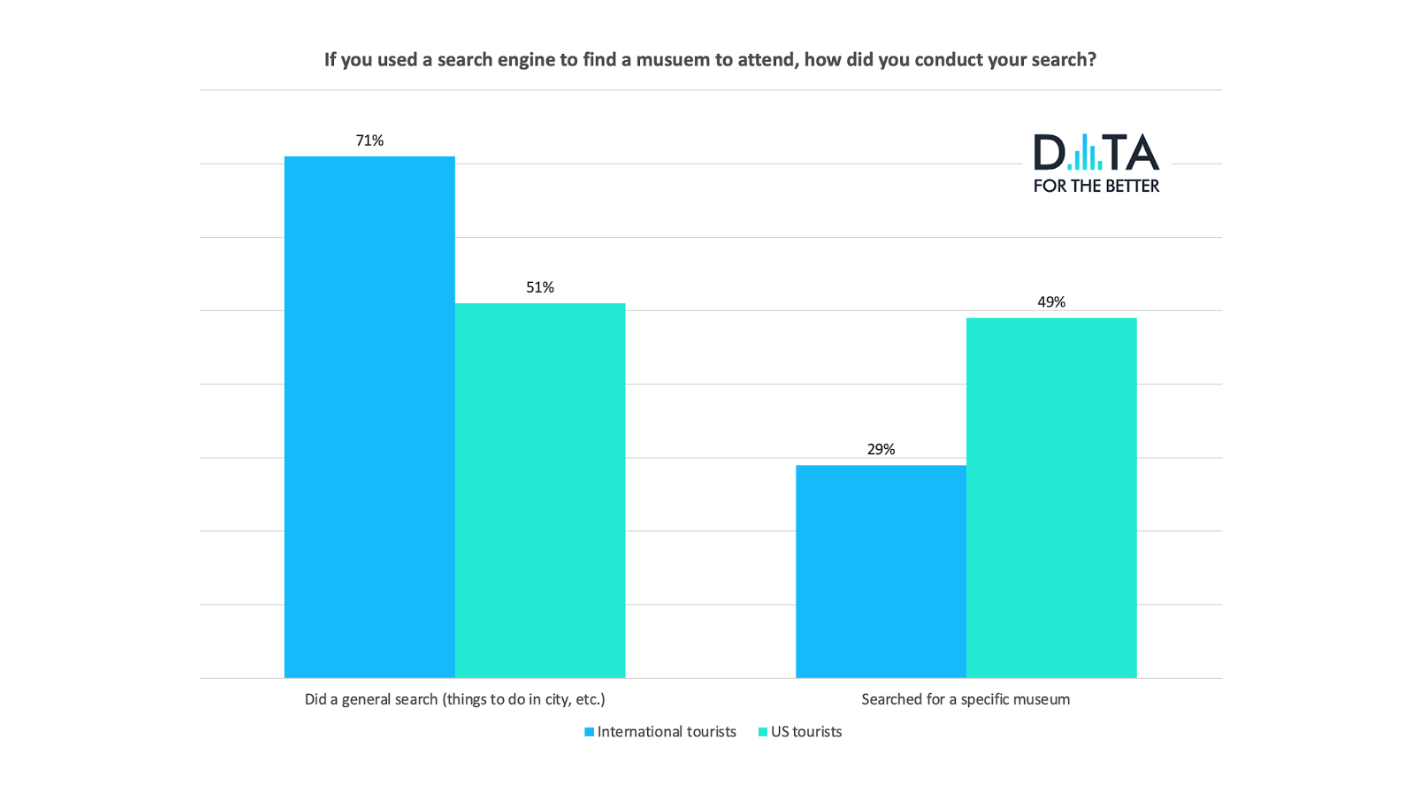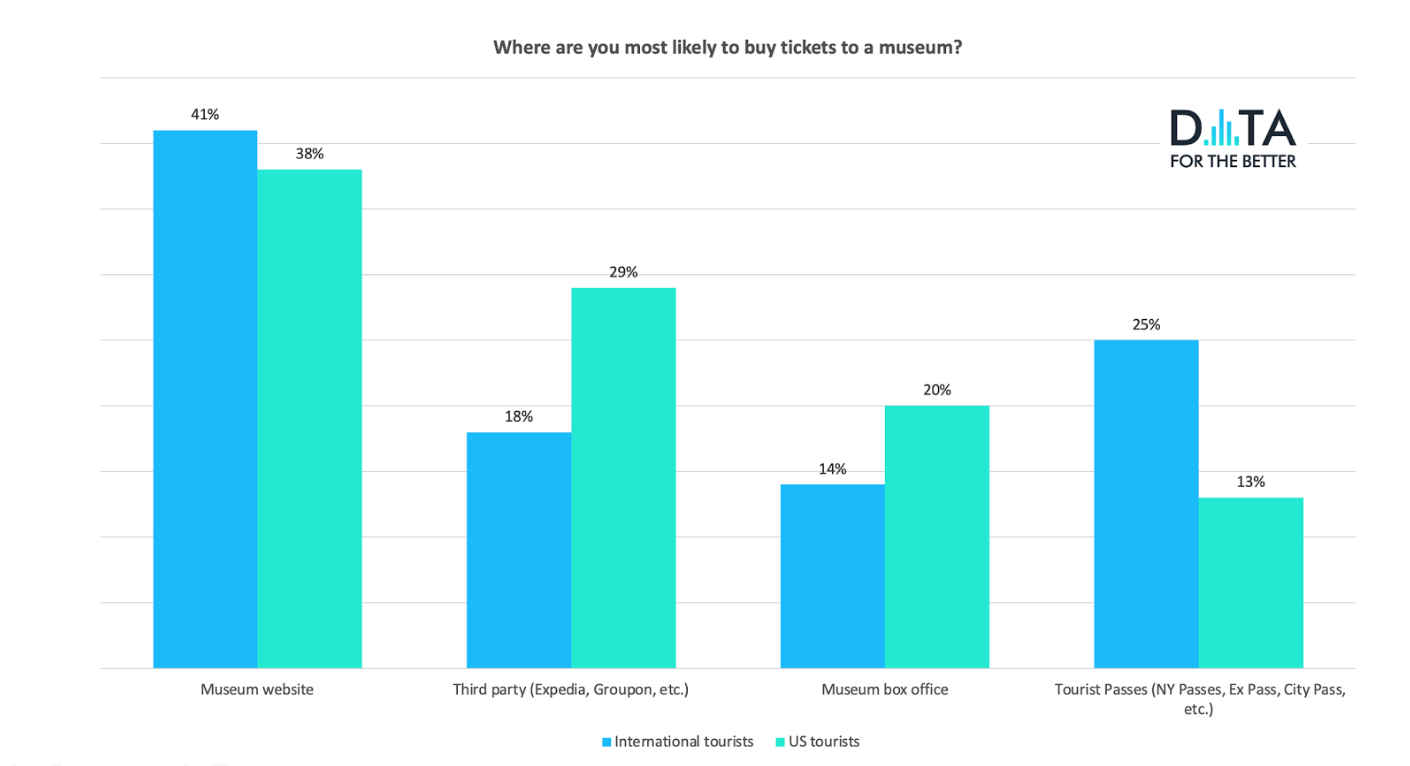When tourists arrive in a new city, nearly 90% haven’t planned their activities. This means the decisions they make in the moment are critical opportunities for museums. To capture this audience, it’s essential to understand how tourists navigate their path to purchase and tailor your media and sales strategies accordingly.
The Key Influencers: Word of Mouth, Search, and Reviews

Tourists rely on a blend of word of mouth, internet searches, and online travel sites like TripAdvisor to find activities. For U.S. tourists, word of mouth is the dominant source, while international visitors lean heavily on general internet searches. Travel websites and apps are also vital, especially for international travelers, with 41% using these resources.
Interestingly, 30% of tourists turn to local visitor magazines and hotel concierges for recommendations, highlighting the importance of maintaining visibility across a variety of channels. International tourists are more likely than their U.S. counterparts to use these resources, making it clear that a multi-channel approach is critical for reaching this segment.
Search Behavior: General vs. Specific

A deeper dive into search behavior reveals significant differences between U.S. and international tourists. International travelers are twice as likely to perform general searches for “things to do” in a city (71%) compared to specific museum searches. On the other hand, U.S. tourists balance general searches and specific museum searches equally at around 50%. These insights should shape your paid search strategy, ensuring your campaigns are aligned with the unique preferences of each audience.
The Role of Reviews and Discounts

Online reviews are a vital first step for many tourists. For international visitors, platforms like TripAdvisor dominate, while U.S. tourists prefer Google reviews, with 70% relying on Google compared to 55% on TripAdvisor. Additionally, discounts play a significant role for U.S. tourists, with researching discounted tickets being their top priority when planning activities.
Where Tourists Buy Tickets

Most tourists (56%) purchase tickets directly from a museum’s website or box office, a trend consistent across both groups. However, U.S. tourists are more inclined to use third-party ticket sellers (29% vs. 18% for international tourists), while international visitors show a greater preference for tourist passes (25% vs. 13%).
Actionable Insights for Marketers
Understanding the nuances of tourist behavior is key to refining your marketing strategy and increasing sales. Here’s how you can leverage these insights:
- Tailor Search Campaigns: Focus on general searches for international tourists and specific museum searches for U.S. tourists to optimize your bidding strategy.
- Prioritize Review Platforms: Ensure your Google reviews are robust to capture U.S. tourists and maintain a strong presence on TripAdvisor for international audiences.
- Highlight Discounts Strategically: Target discounts to appeal to U.S. tourists while ensuring your general appeal resonates with international travelers.
- Leverage Multiple Channels: Don’t overlook the importance of local magazines, hotel concierges, and travel apps in reaching international visitors.
By understanding how tourists make decisions and adjusting your tactics accordingly, you can ensure your museum remains top of mind for travelers. The key is to invest in research, optimize your approach, and continually refine your strategy to create lasting connections with your audience.
All highlighted data was collected via an online survey to domestic and US tourists in September 2024.
